Wheat was first planted int he United States in 1777 and is a member of the grass family that produces a dry, one-seeded fruit called a kernel. Texas is ranked 5th for wheat production in the United States. In 2015, there were over 106 million bushels of wheat grown in Texas. That is over 4 billion boxes of cereal.
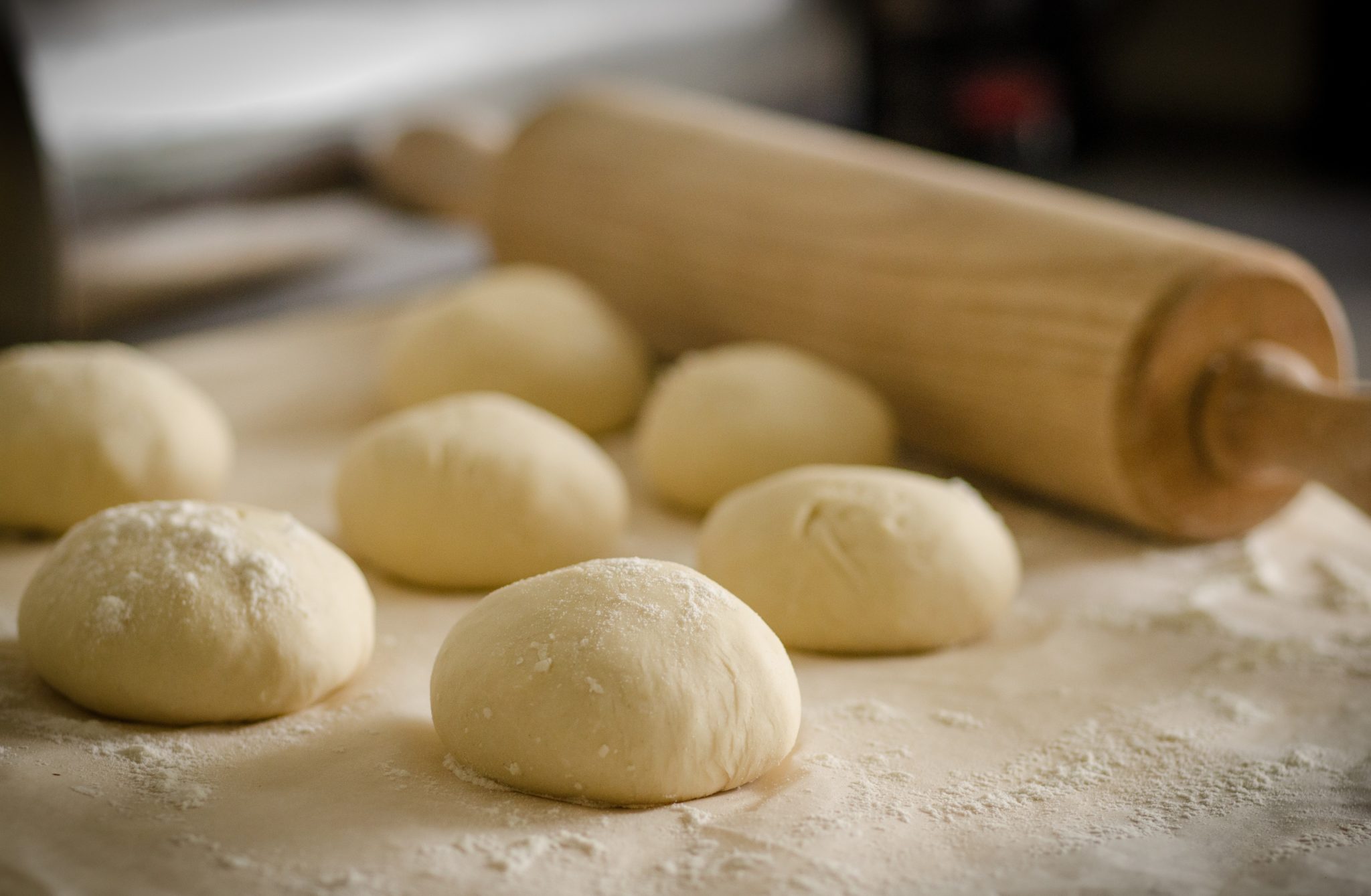
Production
Wheat is a grain which may also be called a cereal grain. Cereal grains are the edible seeds of specific plants such as wheat, oats, corn, and rice. Wheat is measured differently than many crops. It is measured in a term called a bushel. 1 bushel of wheat equals 60 pounds of wheat.
In Texas, farmers produce Hard Red Winter and Soft Red Winter wheat, but the majority is the Hard Red Winter variety.
There are different types of wheat that farmers produce:
- Hard Red Winter – This variety has good characteristics for baking. In fact, it is most commonly used for bread, all-purpose flour, cereal, and Asian noodles.
- Hard Red Spring – This variety is also used for baking and has the highest protein content of any wheat variety. This type of wheat is commonly used for rolls, croissants, bagels, and pizza dough.
- Soft Red Winter – This variety of wheat is low in protein and most commonly used for cookies, crackers, and pretzels.
- Soft White – Commonly used for cakes, pastries, and flatbreads. Soft white is low in protein and most commonly grown in the Pacific Northwest states of Washington, Oregon, and Idaho.
- Hard White – This is the newest variety of U.S. wheat; commonly used for Asian noodles and bread. It has a sweeter and milder flavor than red wheats.
- Durum – This wheat variety is the hardest of all U.S. wheat which makes it ideal for grinding into semolina flour. Semolina flour is the base product for pastas such as spaghetti and macaroni.
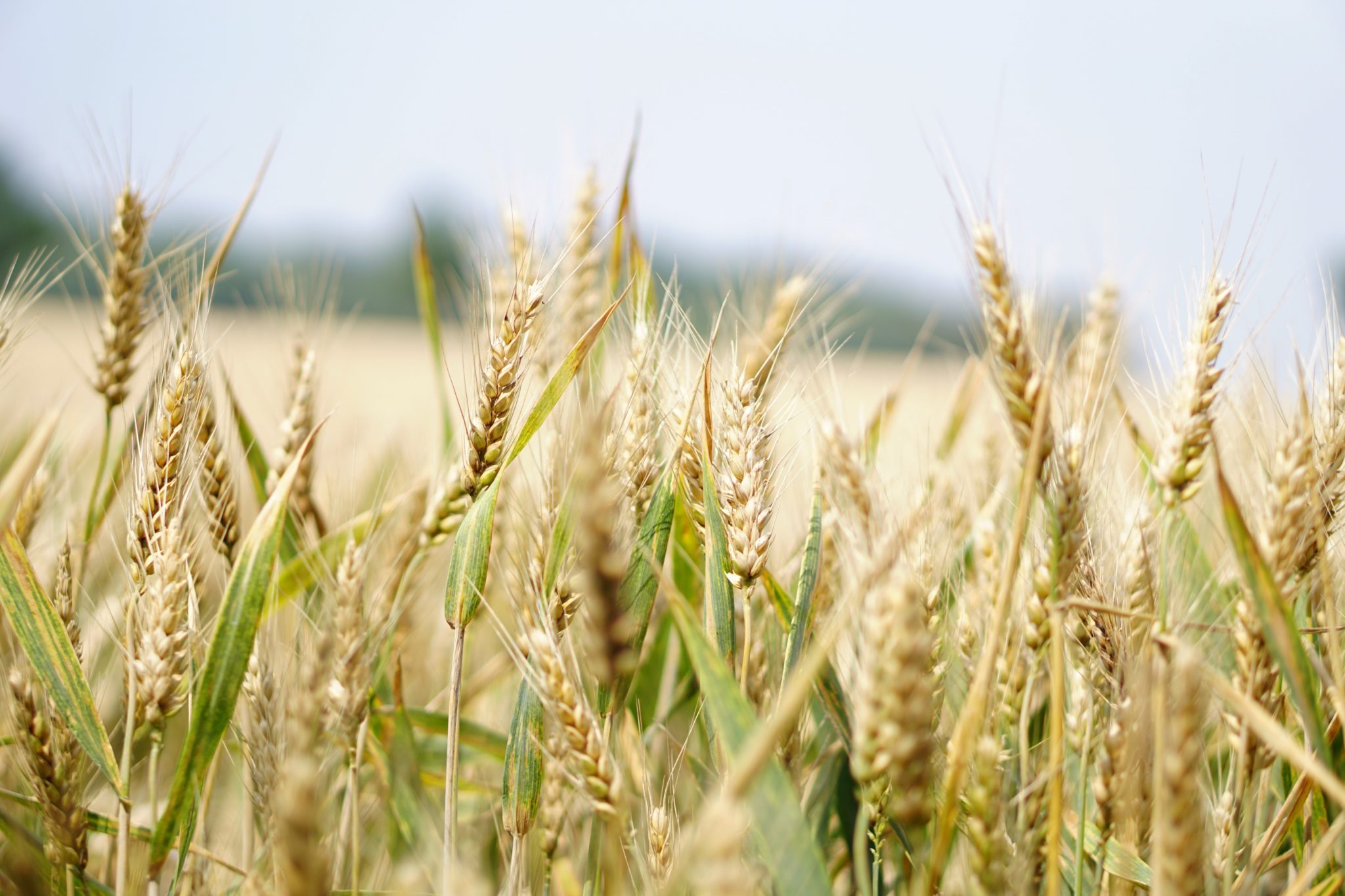
Parts of the Wheat Plant
- Bran – The bran is the multi-layered outer skin of the edible kernel. It contains important antioxidants, B vitamins, and fiber.
- Germ – The germ is the embryo which has the potential to sprout into a new plant. It contains many B vitamins, some protein, mineral, and healthy fats.
- Endosperm – The endosperm is the germ’s food supply, which provides essential energy to the young plant so it can send roots down for water and nutrients, and send sprouts up for sunlight’s photosynthesizing power. The endosperm is by far the largest portion of the kernel. It contains starchy carbohydrates, proteins, and small amounts of vitamins and minerals.
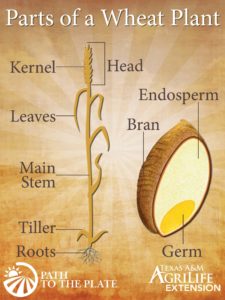

By-Products of Wheat
Wheat can be used for more than just food! Some common by-products can include:
- Trash bags
- Insulation
- Soaps and Shampoos
- Particle board
- Dog treats
- Adhesives
- Cat litter
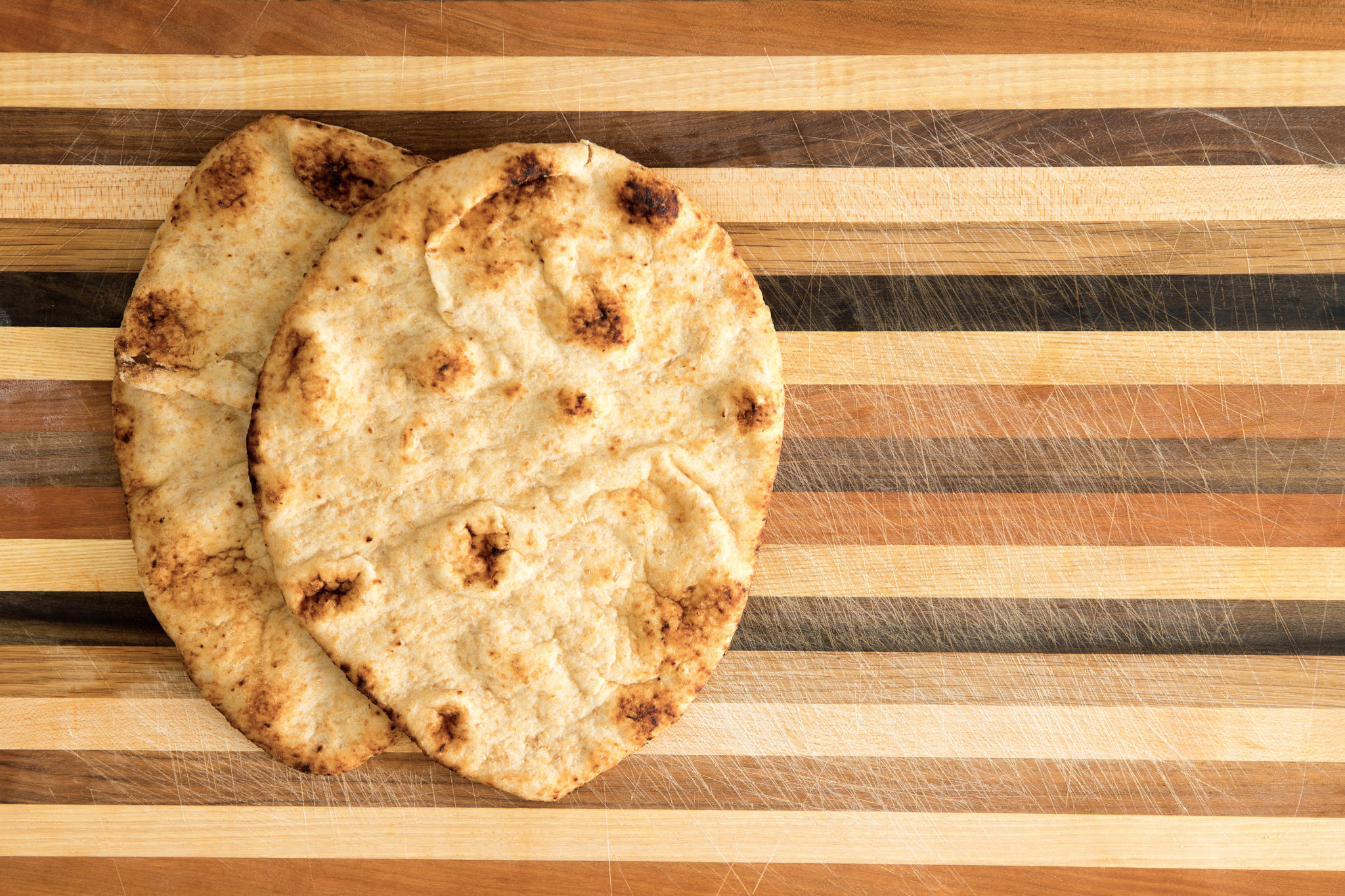
Health and Nutrition
MyPlate recommends that at least one-fourth of the plate should be grains, specifically whole grains. In addition, at least 1/2 of our servings of grains should be whole grains.
Whole grain foods provide:
- Fiber
- Protein
- Carbohydrates
- Vitamins
- Minerals
Not all grains are considered whole grains. An example of this is white rice that has been milled to remove the bran and germ layers. This results in many of the vitamins and minerals being lost in the process and added back, which is known as enriched grains.
Some people can’t eat wheat because their body can’t process gluten which is the protein found in wheat, barley, and rye. Gluten helps the bread expand when rising and helps it hold its shape while baking and after it cools. It also makes bread chewy.
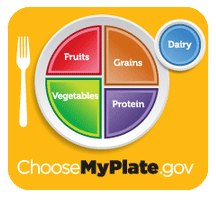
References
National Association of Wheat Growers (2017). Wheat facts. Retrieved from http://www.wheatworld.org/ wheat-101/wheat-facts/
Nebraska Wheat (2009).
Wheat from field to flour. Retrieved from https://nebraskawheat.com/wp-content/up loads/2014/01/WheatFromFieldToFlour.pdf
Oldways Whole Grain Council (nd). What’s a whole gran? A refined grain? Retrieved from https://wholegrainscoun cil.org/whole-grains-101/whats-whole-grain-refined-grain
Texas Wheat Producers Board and Association (2016). Wheat fact. Retrieved from http://texaswheat.org/wp-con tent/uploads/2016/06/2016-06-28-Texas-Wheat-Fact-Handout.pdf
United States Departemnt of Agriculture (2016). All about the grains group. Retrieved from https://www.choose myplate.gov/grains
Wheat Foods Council (2014). Facts about gluten. Retrieved from http://www.wheatfoods.org/sites/default/files/ atachments/gluten-bulletin-final.pdf
Wheat Foods Council (nd). The wheat you eat: how it’s grown and made into our food. Retrieved from http://wheatfoods.org/sites/default/files/atachments/teaching-kids-about-wheat-wfc-feb-2014_0.pdf
